A young mother recently said to me after dropping her oldest son off at Kindergarten, “I stayed and waited for the bell to ring to see if he’d’ get in line. Then I went to look at him through the classroom door. He hung up his backpack and seemed just fine.” Many parents are sending their children off to school at this time of year. Whether it’s preschool, elementary, middle, high school, or even college each parent hopes their children will do well, be happy, and succeed.
Many different types of parents have passed through my classroom over the years. As a secondary school teacher I often have wanted (but have refrained) to say to the more concerned parents “It’s OK. Give your child some space to make his/her own decisions. Allow your child more independence. Allow your child to self-advocate. Everything will be OK.”
Recently, an experience with a couple of my children and a friend became an analogy to me of this universal life-experience of needing to “let go” and allow our children the freedom to discover and act independently.
We visited the tallest outdoor climbing wall in the world. It towered ominously up into the sky and our three climbers approached it each uniquely. The youngest raced ahead, unaware of the dangers. The older girls went with trepidation and even fear. However, they all faced the tower. Each climber worked with a “belayer”, the team member who is responsible for maintaining tension in the rope to ensure that the climber doesn’t fall far in the event he/she slips. Additionally, there was a climbing coach giving tips and advice and suggestions for alternate routes when a climber became stuck.
Our youngest, taking the easiest pathway, scampered to the top of the tower with no problem. When challenged with more difficult climbing routes, he slowed down, required some guidance, and learned some new techniques that would help him on later climbs. The older two, gripped by fear during initial climbs took a bit longer and required more coaxing to get to the top, however, they gained confidence and skills that allowed them to ascend at a faster rate later in the day.
Triumphant climbers!
They strengthened muscles. They developed skills. They enjoyed the climb. They thrilled in arriving at the top. But even once at the top, they weren’t “done” - there are more challenging routes to try, more ways to develop oneself.
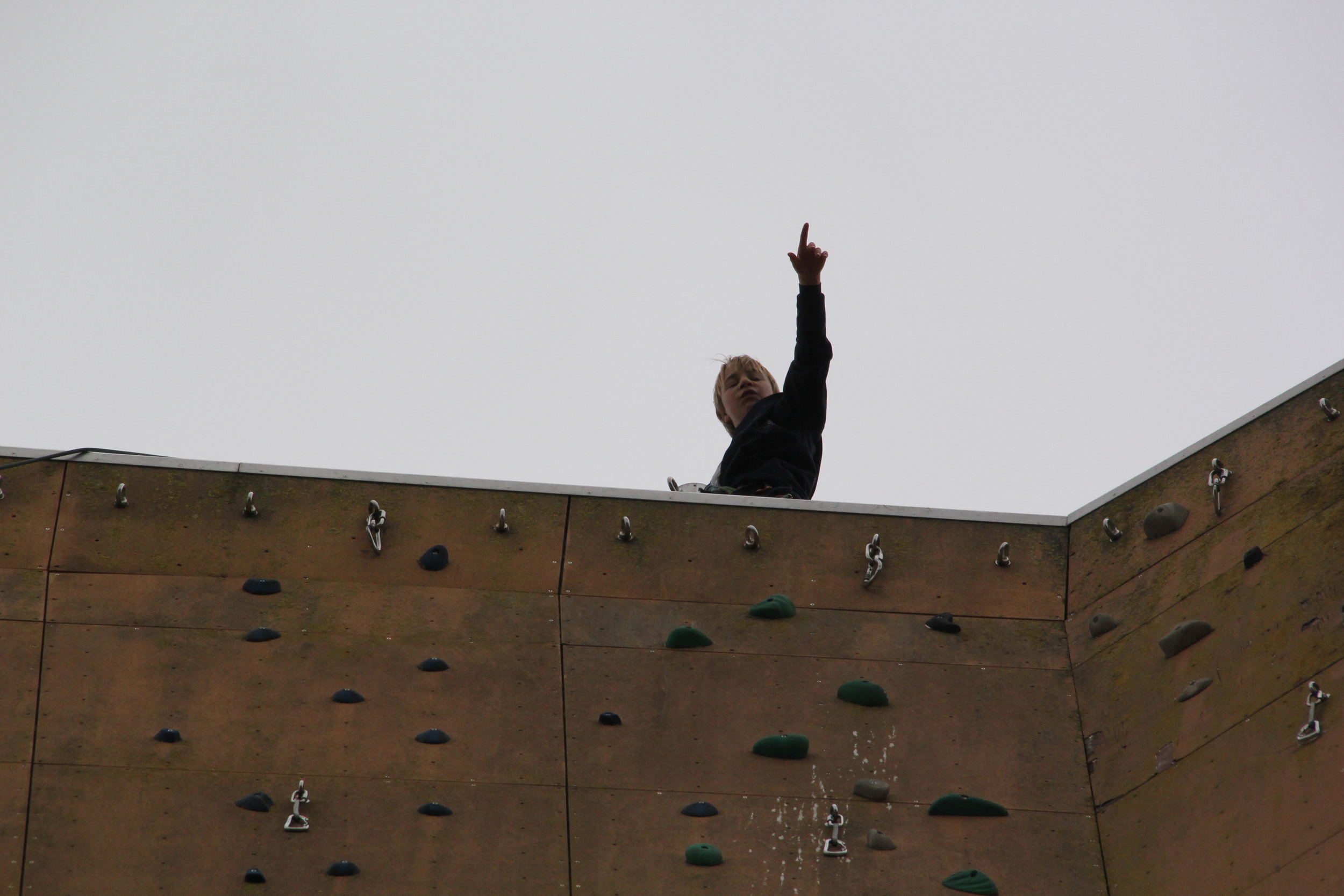
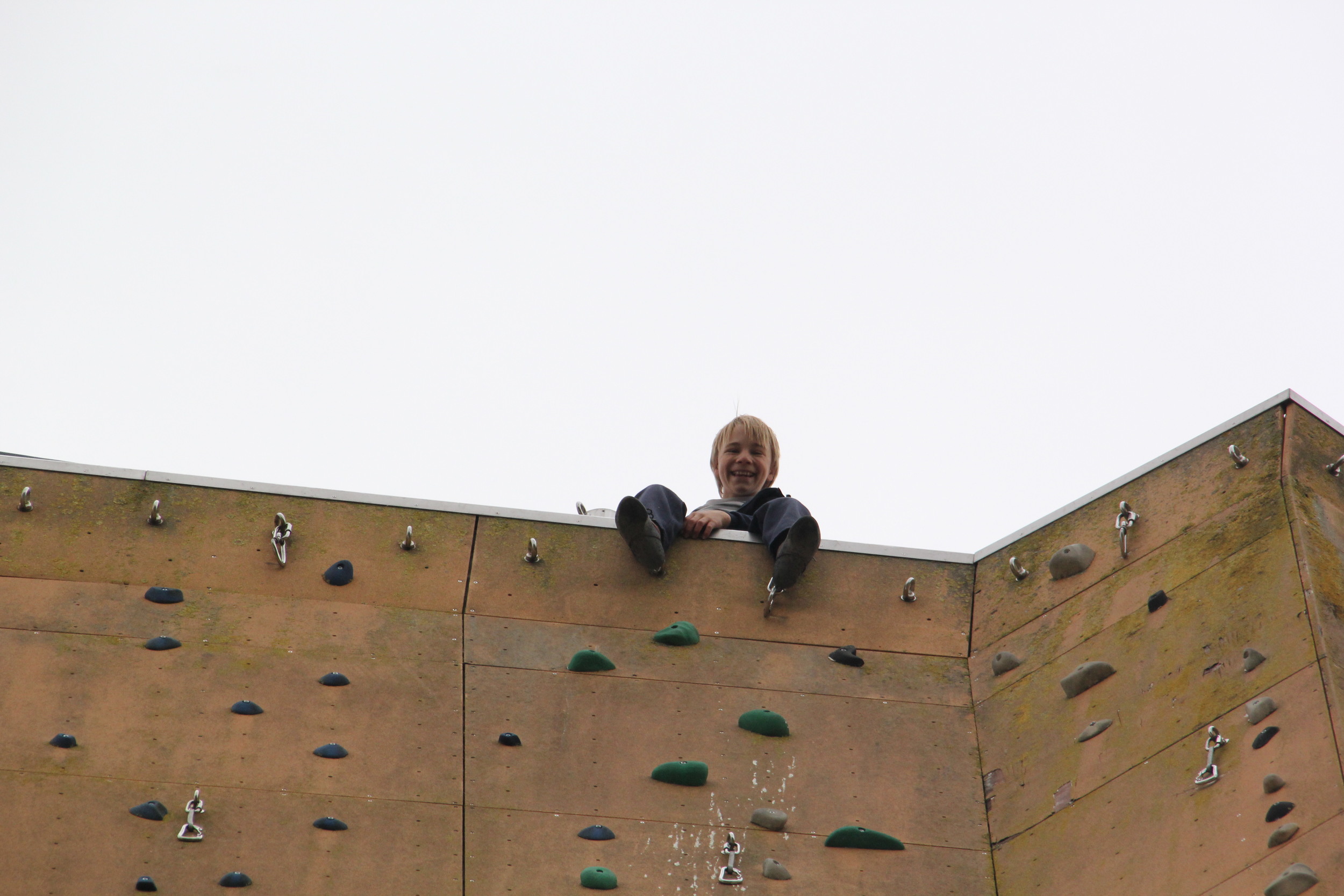
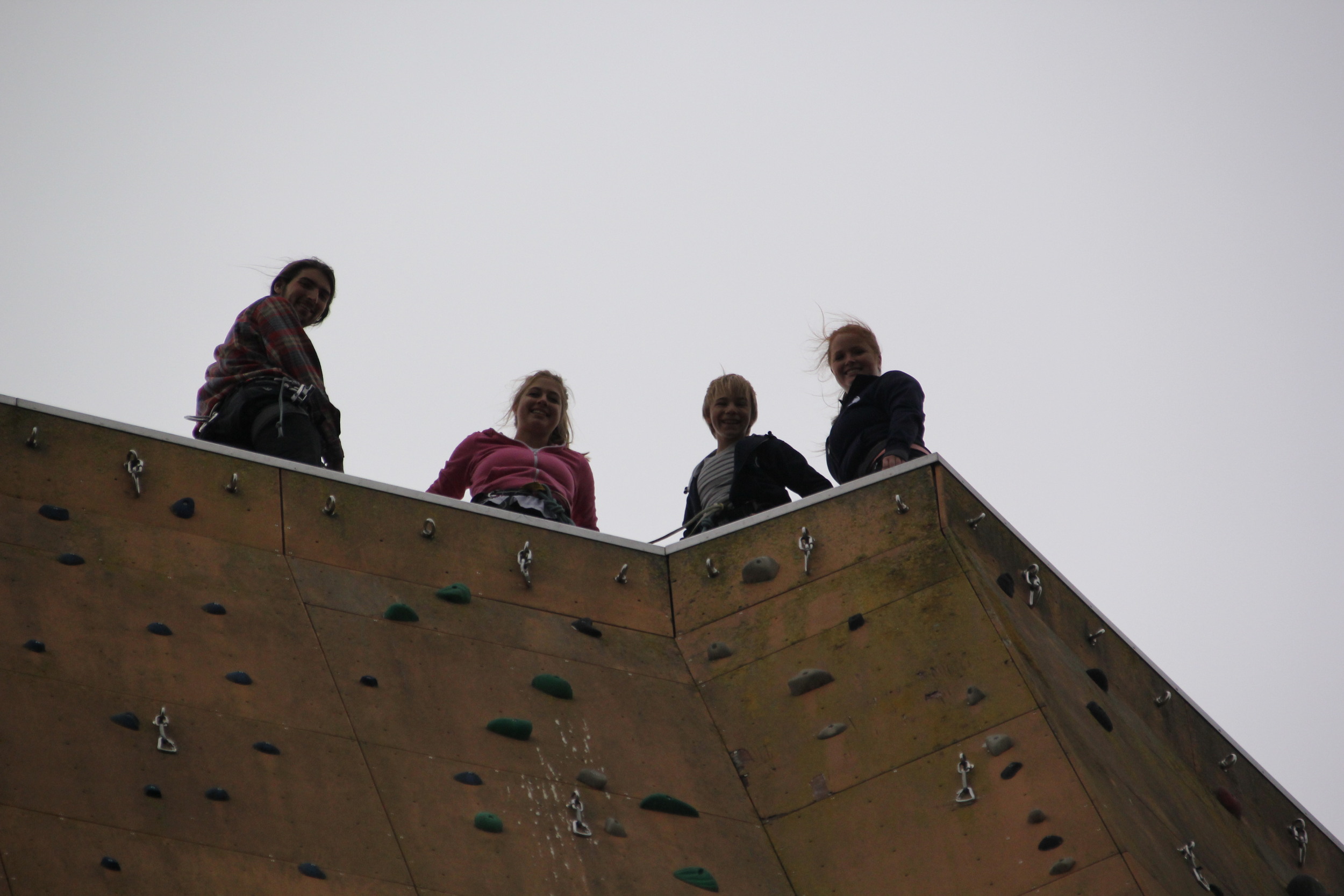
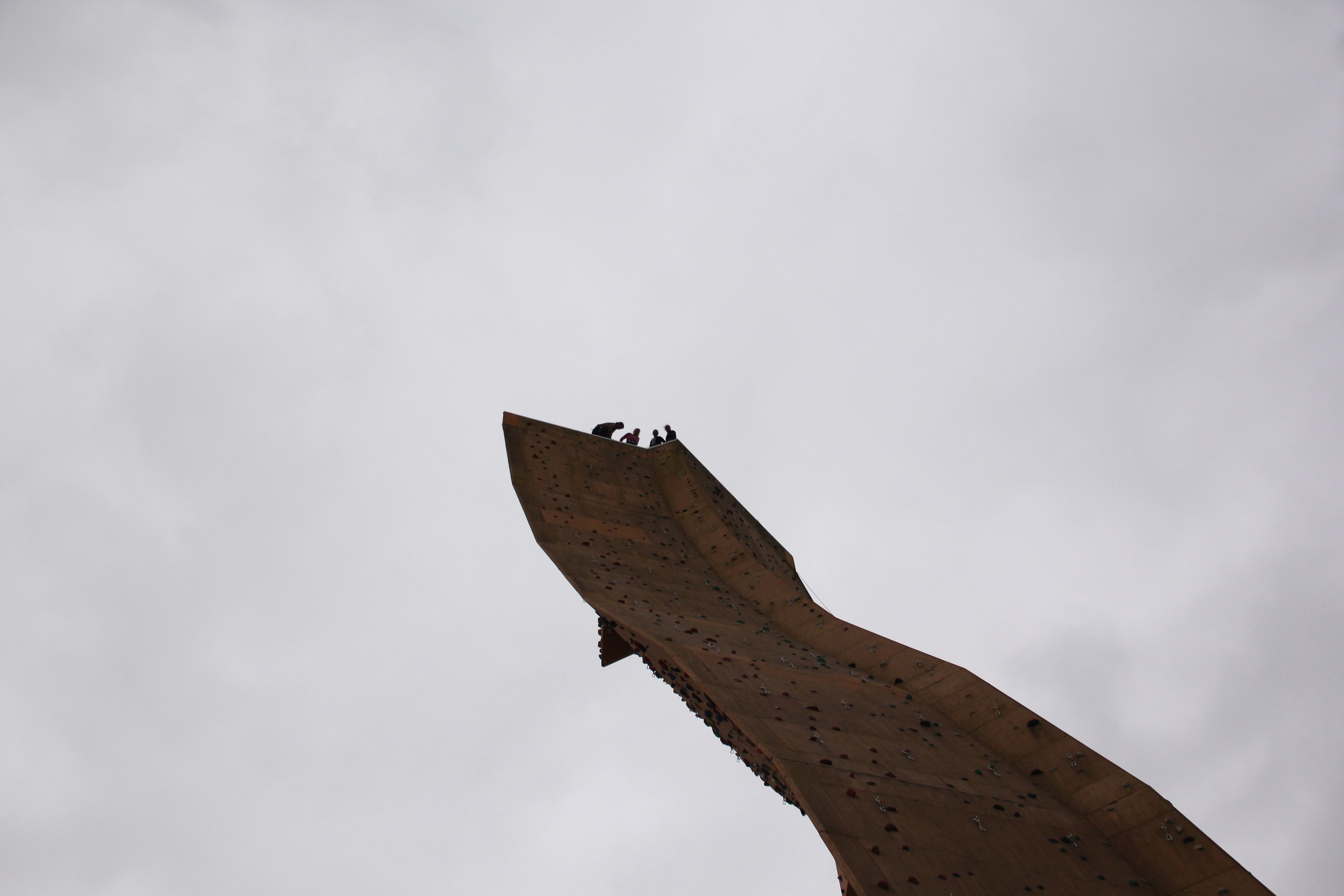
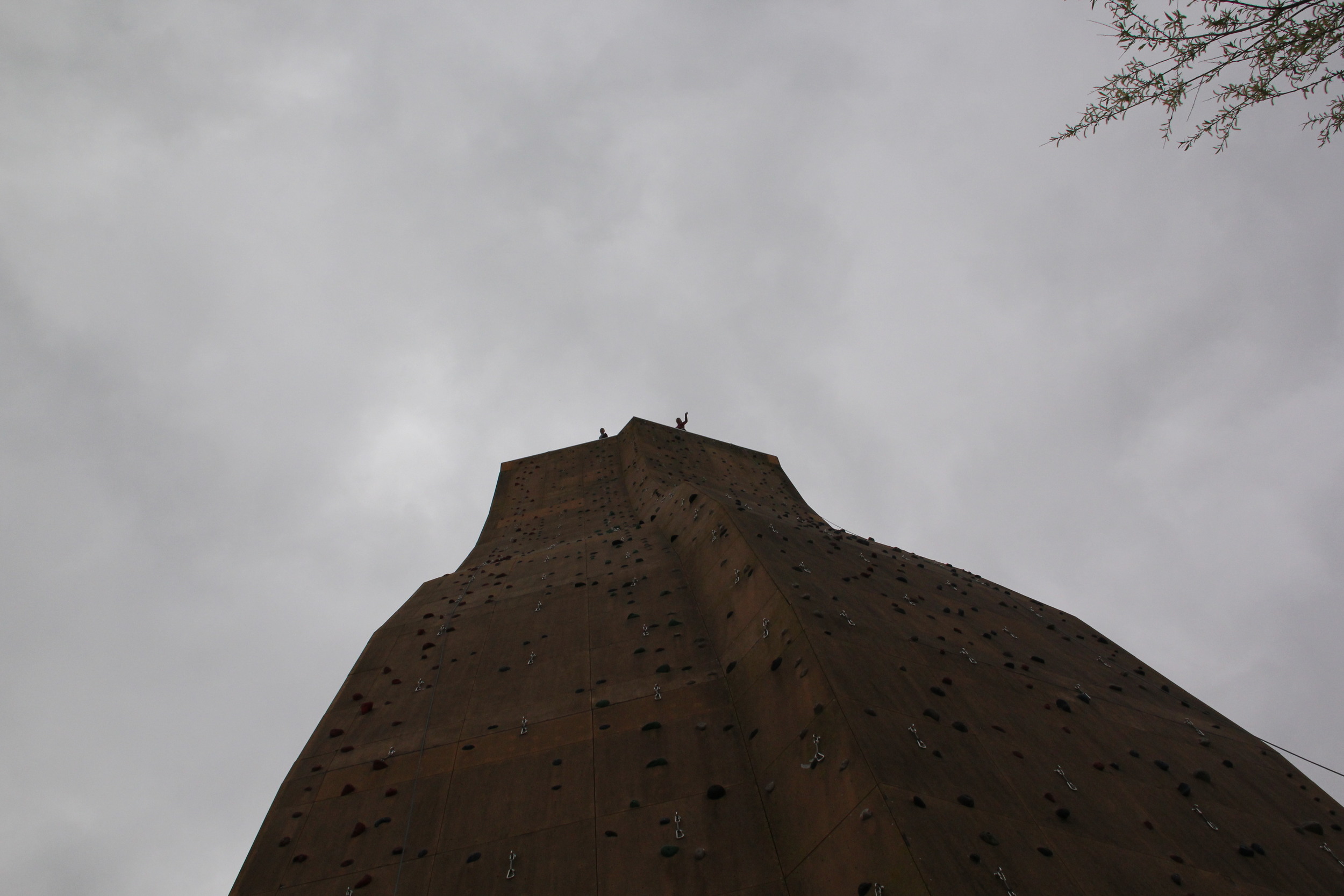

The students are the climbers. They must decide the route and perform the climb. In secondary school, students should make decisions about how to study, when to study, and eventually in high school what classes interest them and in college what major to choose and what career to pursue. Teachers are the climbing coaches. They facilitate learning and give tips and advice to help students find the best path to acquiring the understandings they need to progress in their education. And parents, along with the teachers, are the belayers. It is their responsibility to be there, in the background, ready to advise and offer help when it is needed. Both teachers and parents need to allow students to choose the more challenging routes so that they can learn the most.
Sometimes, however, parents think they must make the climb with their child or perform the climb for the child. And, in so thinking, become too involved, preventing the child the opportunity to grow and become strong in good decision making. A belayer who “hoists” the climber to the top is not allowing the climber to gain necessary decision making, troubleshooting, and muscle building skills to master more difficult climbs. A parent who becomes over involved with his/her child also prevents that child from gaining important communication skills and the ability to self-advocate (how many adults do you know who are afraid to ask for a much deserved pay raise). They also inhibit the child’s opportunities to learn how to make good decisions regarding study habits, balancing pleasure and work, and enacting good behaviours in school.
It is OK for students to “slip” or make mistakes. It is during these moments that lessons are learned and the ability to make better decisions in the future is increased. As both teacher and parent, I speak to all parents: Keep that belaying rope in your hand but keep it loose. Allow your children to learn and grow by giving them more independence. They will find their route, they will find their passion, and they will thrill in reaching the top on their own.
Smiles come with Self-attained Success





